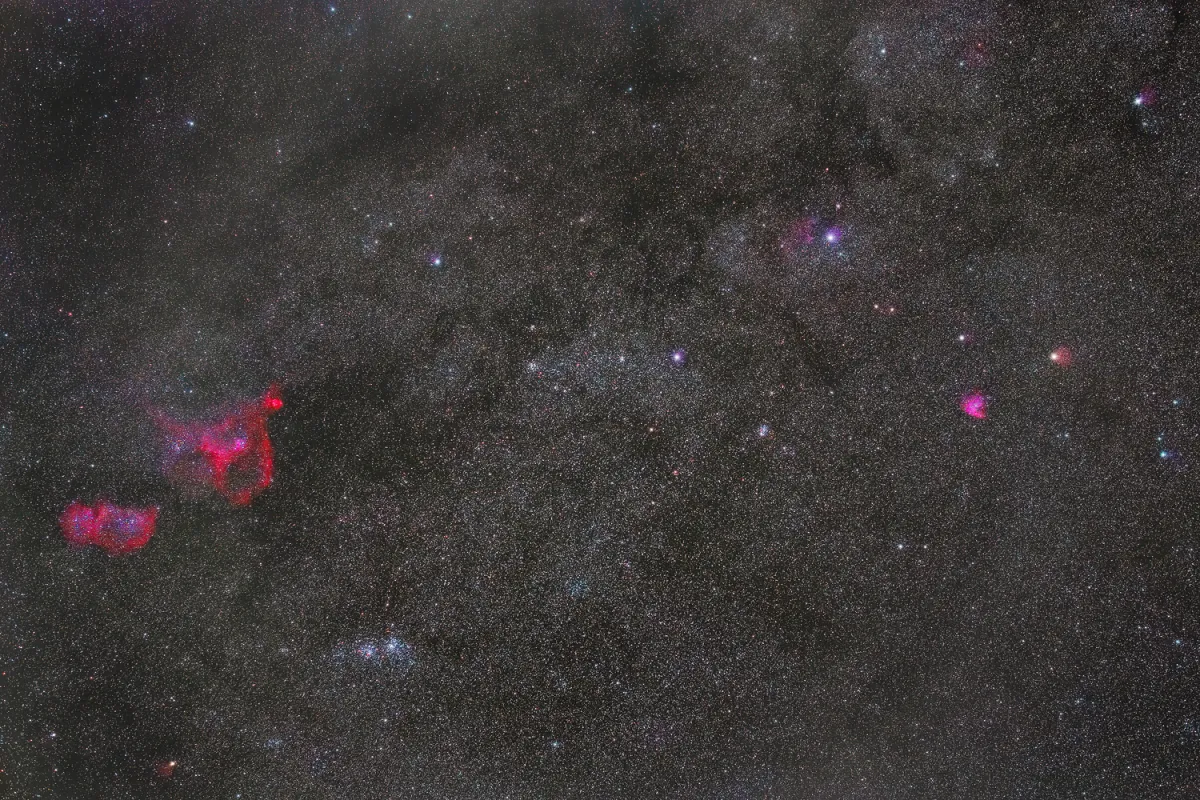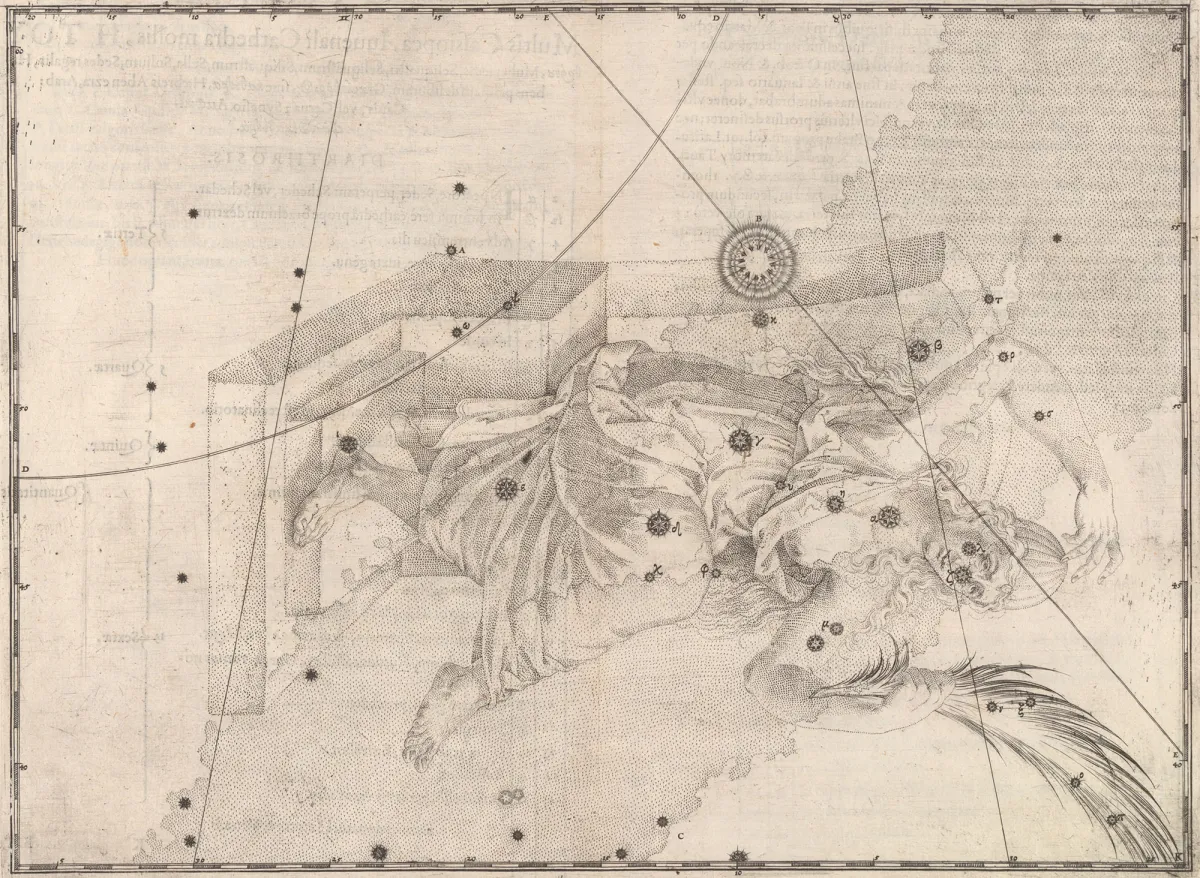Constellation Cassiopeia (Seated Queen)

Properties
Cassiopeia belongs to the circumpolar constellations and is very noticeable. The five brightest stars form a spooky 'W' that is open to the north. With her husband Cepheus on the western side, she looks at her son-in-law Perseus and her daughter Andromeda in the south. The constellation is in the band of the Milky Way, roughly opposite its centre and thus contains a number of open star clusters. The constellation has an area of 598 square degrees and its centre culminates around midnight on October 9th. [9, 15]
| α Cas | Shedir, Schedar, Schedir |
| β Cas | Caph, Chaph, Kaff, Al Sanam Al Nakah |
| δ Cas | Ruchbah, Rucba, Rucha, Ksora |
| ε Cas | Segin, Ruchbah |
| η Cas | Achird |
| θ Cas | Marfak |
| μ Cas | Marfak |
| IAU Name | Cassiopeia |
| IAU Genitive | Cassiopeiae |
| IAU Abbr. | Cas |
| English Name | Seated Queen |
| Culmination at local midnight | 10 October |
| Season (Latitude +0.0°) | June … March |
| Right Ascension (J2000.0) | 22h 57m 05s … 03h 41m 14s |
| Declination (J2000.0) | +46° 40' 33" … +77° 41' 32" |
| Area | 598 deg2 |
| Neighbours (N↻) | Cep, Lac, And, Per, Cam |
Deep-Sky Object Descriptions
CTB 1
IC 59/63
IC 1805
IC 1848
NGC 225
NGC 281
NGC 457
NGC 7635
NGC 7789
Sh 2-157
Sh 2-170
Simeis 21
Catalogues

Mythology and History
In Greek mythology, the beautiful but also arrogant Cassiopeia represented the queen of Ethiopia, part of the royal family of heaven. In the sky she appears sitting on a chair. Her husband was King Cepheus and her daughter was Princess Andromeda. Cassiopeia insulted the beautiful daughters of the ancient sea god Nereus. She boasted that she was more beautiful than her. The nymphs complained to Poseidon, god of the seas, who thereupon sent the sea monster Cetus to destroy the Ethiopian coast and demanded Kassiopeia's daughter as a sacrifice. Andromeda was freed by Perseus.
Despite her daughter's rescue, she was reluctant to give Cassiopeia away. When the celebration of the wedding was interrupted by the intrusion of an armed band secretly sent by Cassiopeia and the leader of this group, Agenor, claimed the hand of Andromeda for himself, a battle broke out. Perseus killed a large number of his opponents, but the majority of his enemies were so powerful that he had to get the Gorgon head to put an abrupt end to the ghost. Two hundred of his enemies turned to stone in horror at the sight of Medusa's severed head. As if by magic, the wild noise of the battle faded away with one stroke. In this silence Poseidon had placed Cepheus and Cassiopeia under the stars. Cassiopeia had first been seen tied up in a market basket as a punishment, which in some seasons even stood upside down in the sky and showed her in a most uncomfortable position, where she was also exposed to the cheap ridicule of the common people. Today, on the other hand, you often see her depicted on a throne chair, in keeping with the dignity of her person, but this too is sometimes tilted dangerously in the sky.

Cassiopeia and Cassiepeia, as this constellation is sometimes written, is one of the oldest and most famous. Because of its shape one sometimes speaks of Heaven-W or Heaven-M. The Romans and the Greeks interpreted the constellation as a woman sitting on an armchair, a throne and therefore called Mulier Sedis or simply Sedes. In the 17th century, when the church tried to Christianize the constellation figures, the constellation Cassiopeia became the sinner Mary Magdalene.
The constellation Custos Messium (The Harvester) used to exist between Cassiopeia and the Pole Star. However, this constellation is no longer recognized today. [20, 74]